(Last updated on 13/10/2025)
With over fitty castles and citadels to choose from, Badajoz province is a great castle-hoping destination. Castillo de Capilla, situated in the far east of La Serena area, is well worth a diversion during your Extremadura road trip.
This article includes a general overview, practical information and several tips to help you plan your trip to Capilla and visit the castle and the surroundings.

Table of contents
About Castillo de Capilla
This castle stands tall atop a hill overlooking a great part of the river Zújar valley. Halfway between a military fortress and a stately residence, it was built using the many existing remains of a former twelfth-century Muslim citadel, such as a cistern and a tower that would later become the keep. The castle has an irregular layout and six towers, the three most important ones on the southern façade.
After the area changed hands from Muslims to Christians in the thirteenth century, the castle was donated to the Knights Templar, and continued changing hands from one order to another, from one nobleman to another, until the mid-nineteenth century, when Castillo de Capilla passed onto the local public authority.
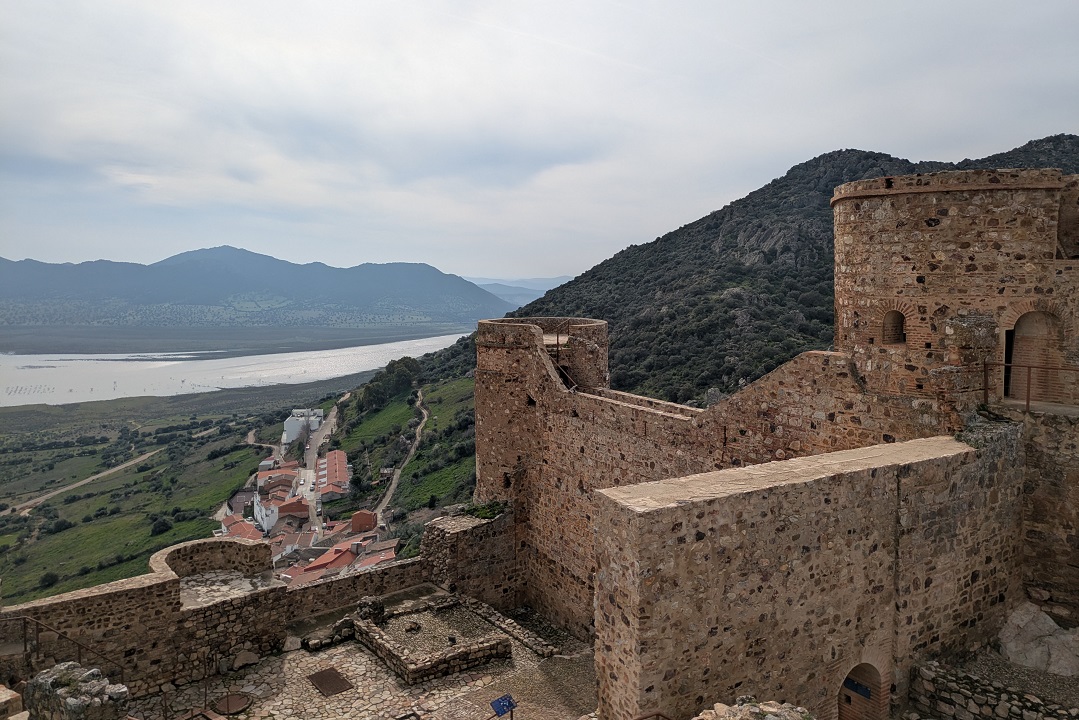
Castillo de Capilla today
The castle interior comprises a series of open spaces organised around two perfectly distinguishable areas situated at different levels and separated by a defensive wall. Major renovation works have been undertaken and the castle is open to the public. Visitors can access both baileys, the underground cistern and the towers.
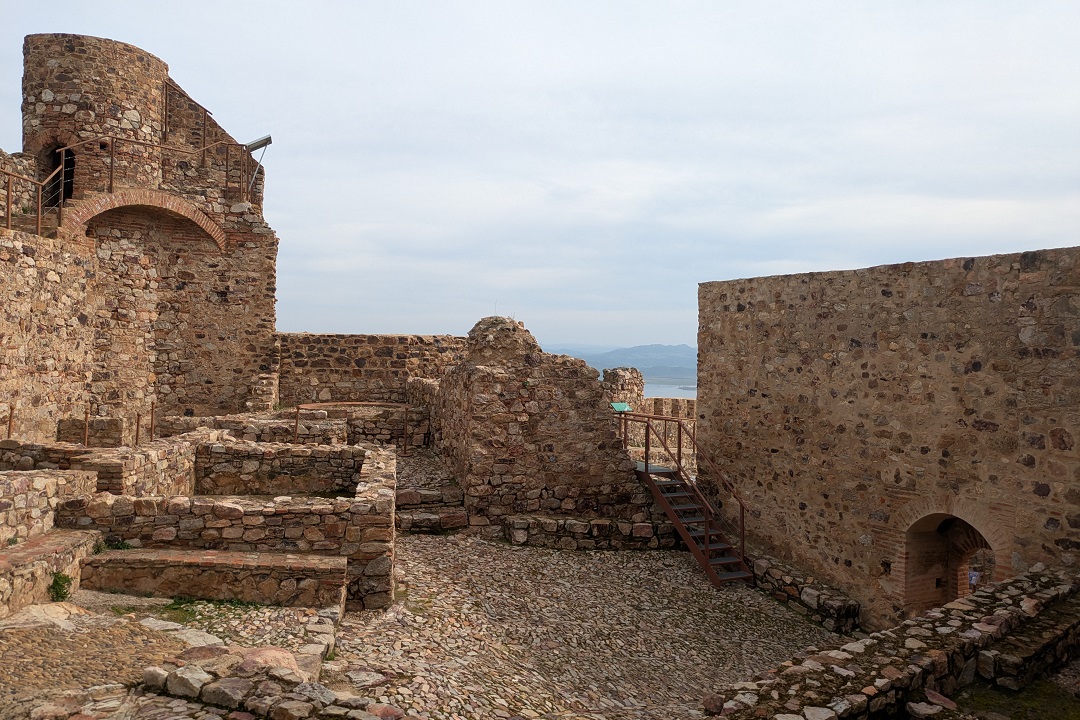
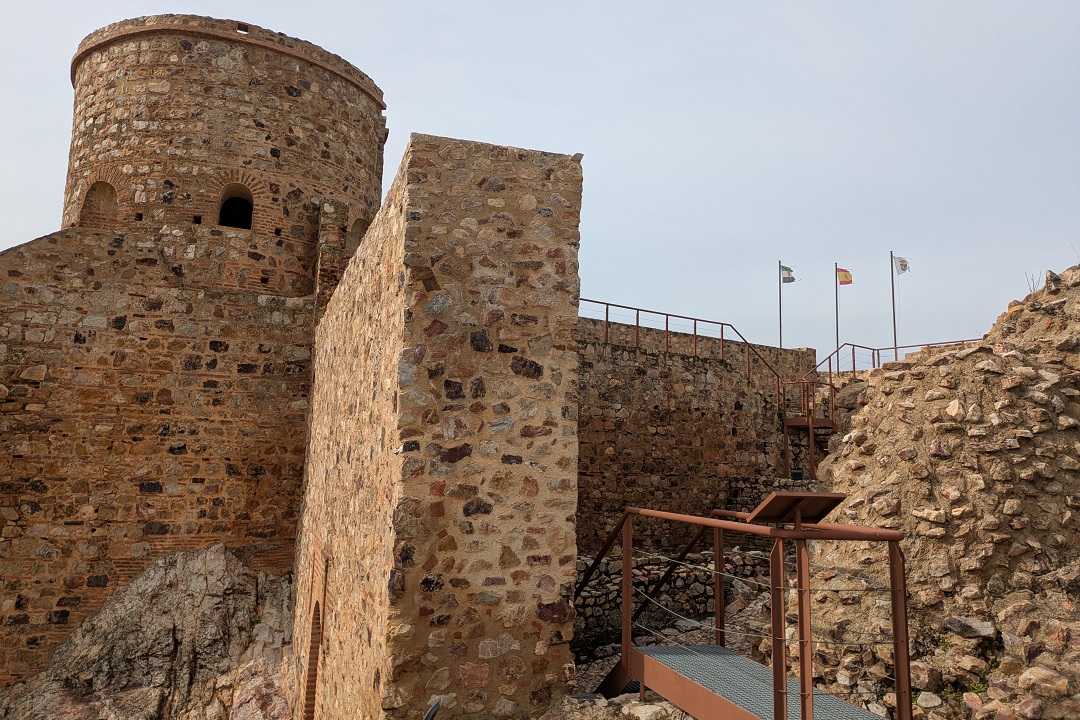
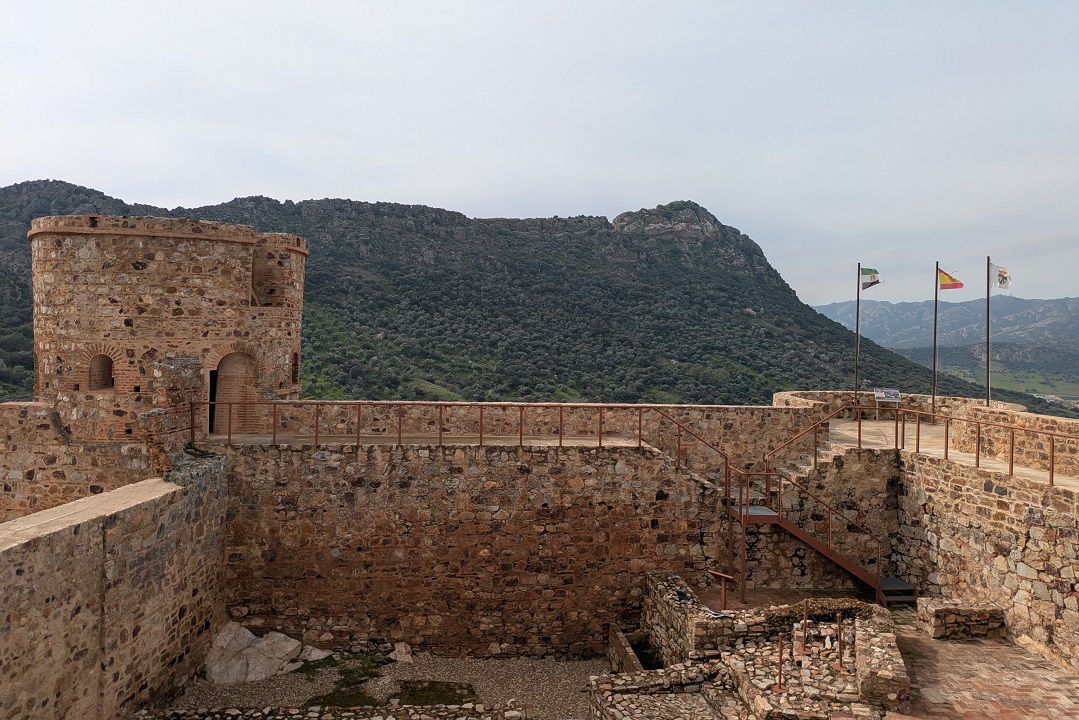
Visiting Castillo de Capilla
The castle can be visited on a guided tour. The standard admission fee is €1.50 per person, to be paid on site in cash. Dogs are not allowed.
*Please note: The castle was closed the day I visited, but the local authorities kindly organised for a local person to let us in upon paying the admission fee. The information in this article is based on the signs located in and around the castle. I will update and expand this article when I next visit Castillo de Capilla on the official guided tour.
Practical info
Location: Calle Calvario, 4
Opening times: from Tuesday to Friday from 10am to 12pm; Saturdays from 10am to 2pm. Other days and times available for groups prior reservation.
Contact details: (tour guide’s mobile phone) +34 676 71 37 50; (town hall landline) +34 924 614 101; (Instagram) @turismo.capilla
Idea: visit Castillo de Capilla in winter or early spring, when temperatures are mild and the countryside is at its greenest; combine the castle with the Senda del Peñón del Pez walking route for a well-rounded day out.
How to get to Castillo de Capilla
Where is Capilla
Capilla is a small village located in the eastern part of La Serena area, in Badajoz province, some forty-minutes minutes away from Castuera and nearly two hours away from Mérida.
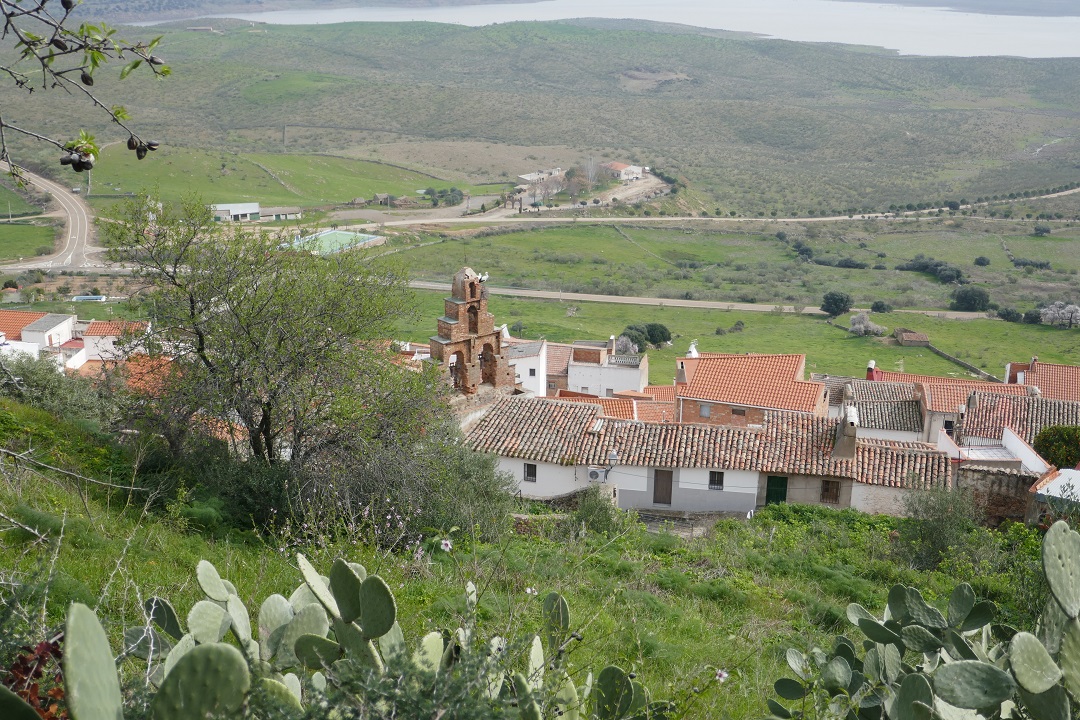
Parking in Capilla
They seem to be working on creating an official parking place close to the entry to the castle, but it’s not very clear or properly signposted. On my first (and only) visit to Capilla (so far), I followed my general small place parking policy of finding a space near the outskirts and walking in.
There is a free parking area on Calle Carretera on the northern end of Capilla, just past the little medical practice and the bus stop.
Walking up to Castillo de Capilla
A few metres up the street there are two signposts for the castle pointing in different directions. I first followed the wooden sign to the right and walked along the paved road for a while, before deciding to turn back. It seemed too far and a bit like a country road and I didn’t trust that it led up to the castle. It does, and this seems to be the better option to reach the castle by car, whenever the parking place is ready.
The other option, and the one I recommend if you want to see a bit of the village or complete the Senda del Peñón del Pez walking route afterwards, is to follow the white sign. Walk along Calle Carretera, past Plaza de España, and along Calle Guardia Civil towards Calle Calvario when you reach the church. A bit further up you’ll see a green ‘acceso al castillo’ sign. From there onwards, just keep walking up the steep stone-paved path.
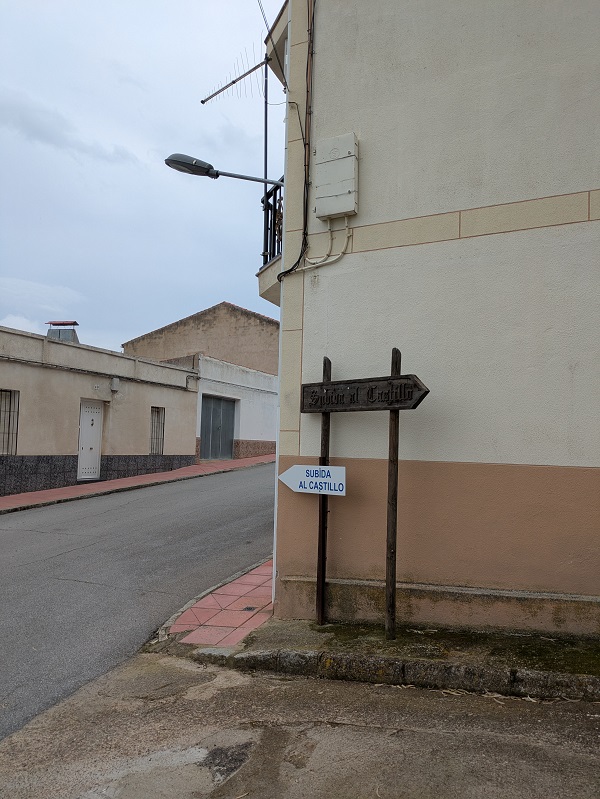
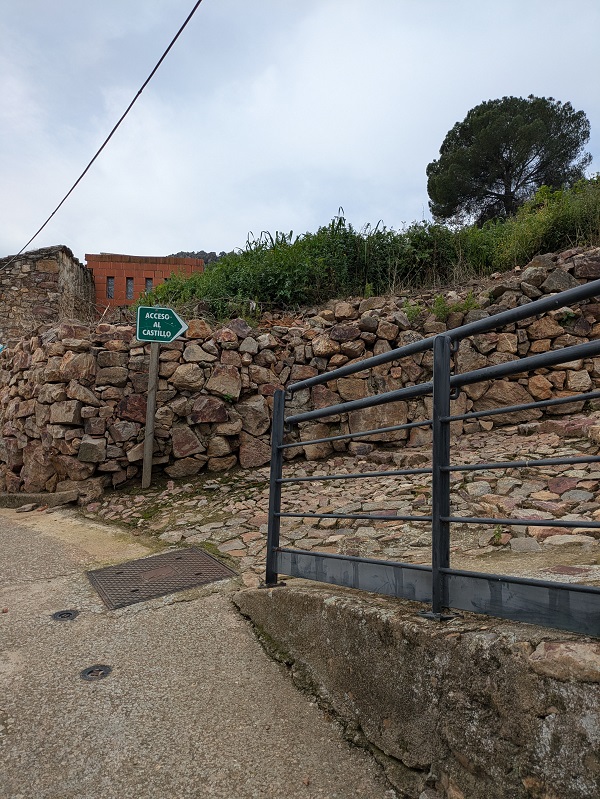
Castillo de Capilla: highlights
Houses within the citadel
According to the excavation works carried out so far, the fortress is thought to have served as refuge to Muslims from the area looking for a safe place in the thirteenth area, when the Christian troops were barely twenty kilometres away.
The remains of these houses within the city walls display some interesting peculiarities. Unlike the classic Moorish constructions of the time, these houses were not organised around a central patio.
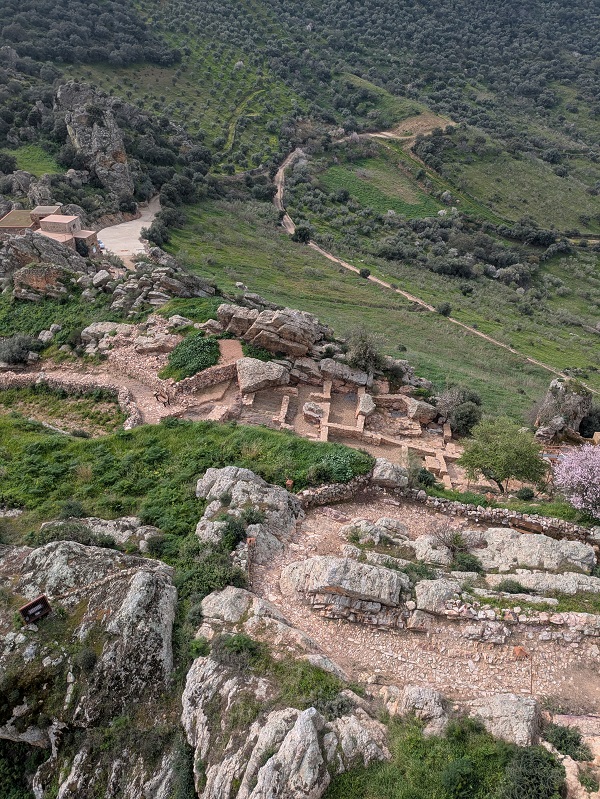
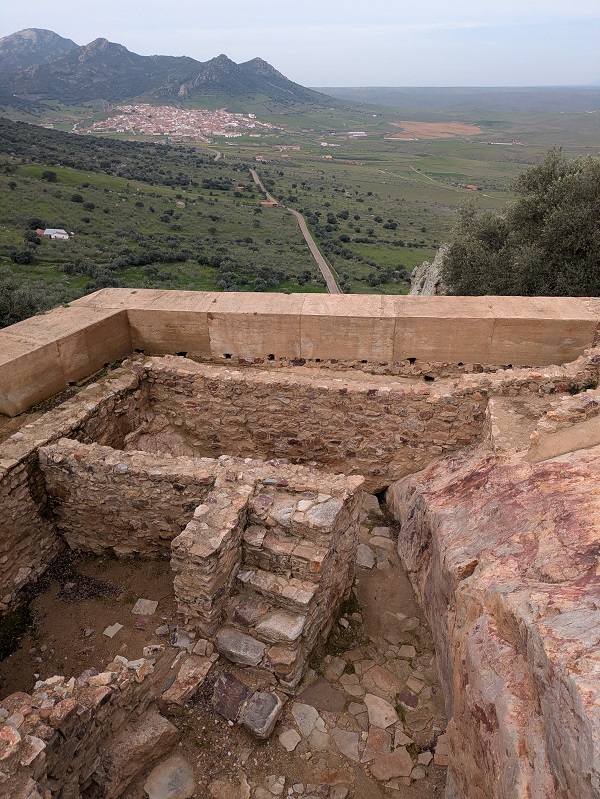
Tower and cistern
This tower and its internal water cistern are one of the many remains of the former Muslim citadel still present. The tapial (rammed earth) building technique indicates that this is an Almohad structure dating back from the twelfth century. In the fifteenth century, other elements were attached to this tower – namely the defensive wall dividing the two baileys and the northeastern wall.
The function of the underground cistern (aljibe), built using very high-quality bricks and covered in a special Roman-style plaster, was to collect and storage rainwater. A red earthy pigment called almagra was applied to the surface as a damp-proof solution. The tower was originally hollow, which means that the cistern could only be accessed from within the tower.

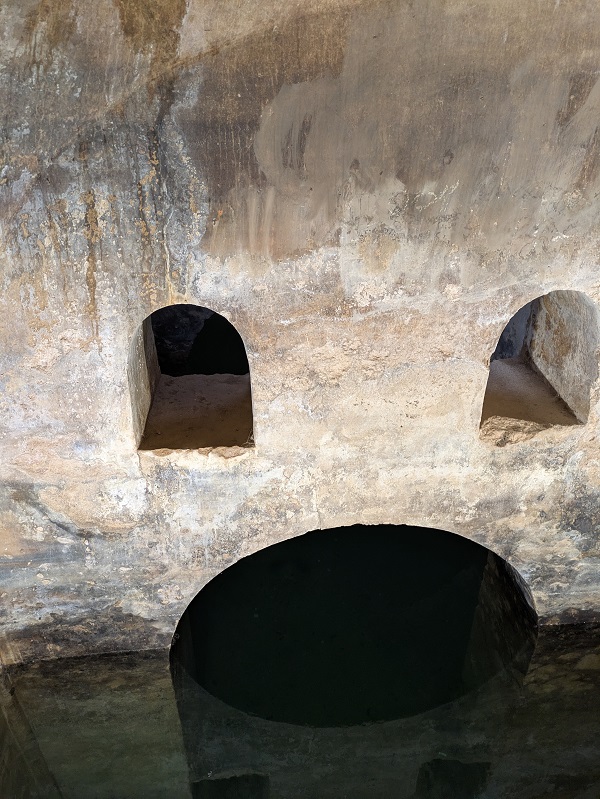
Round towers
The most notable elements of the castle are, perhaps, the three round towers along the southern façade, easily accessible from the upper bailey and offering fantastic views.
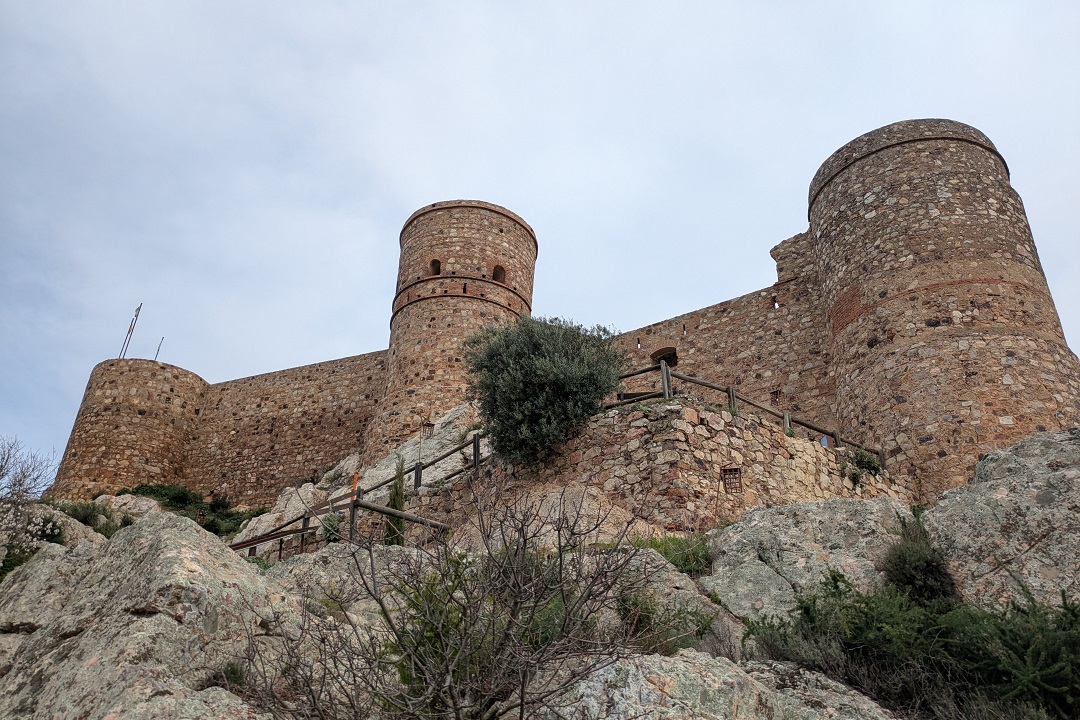
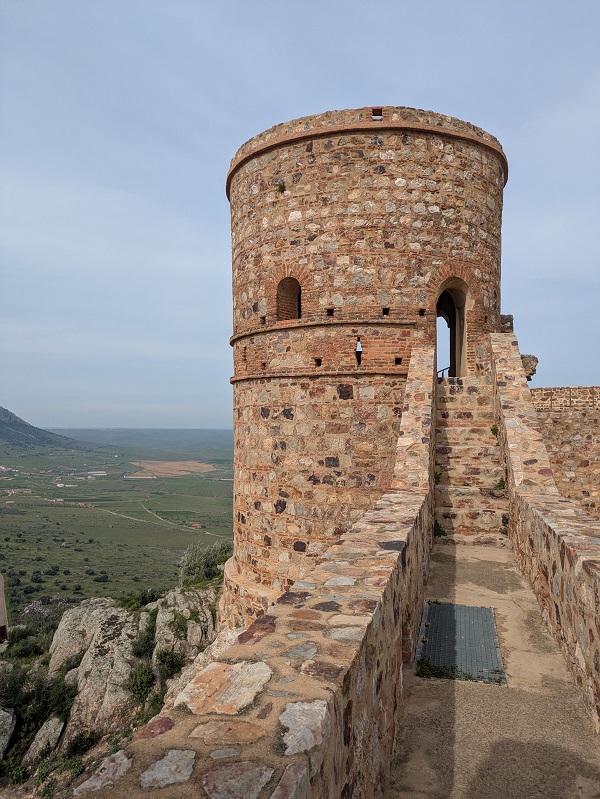
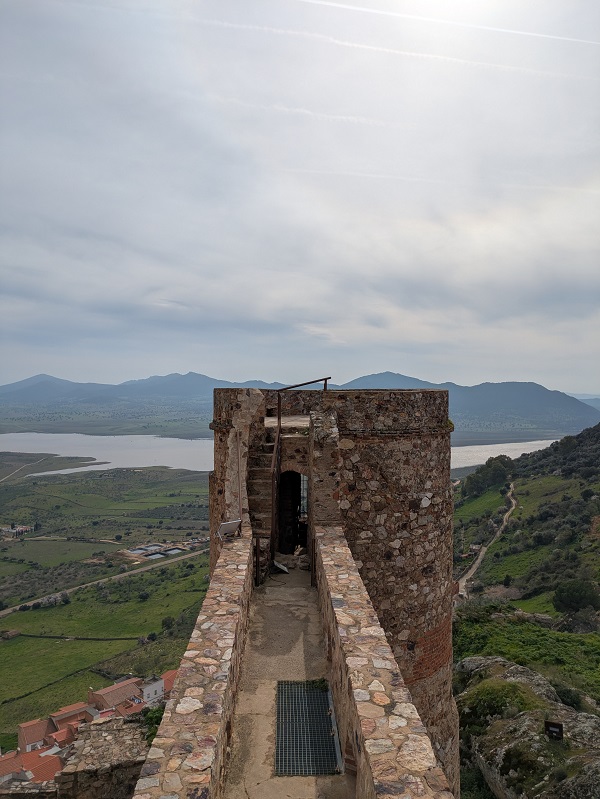
Views from Castillo de Capilla
These are, more or less, the views you get in all four directions:
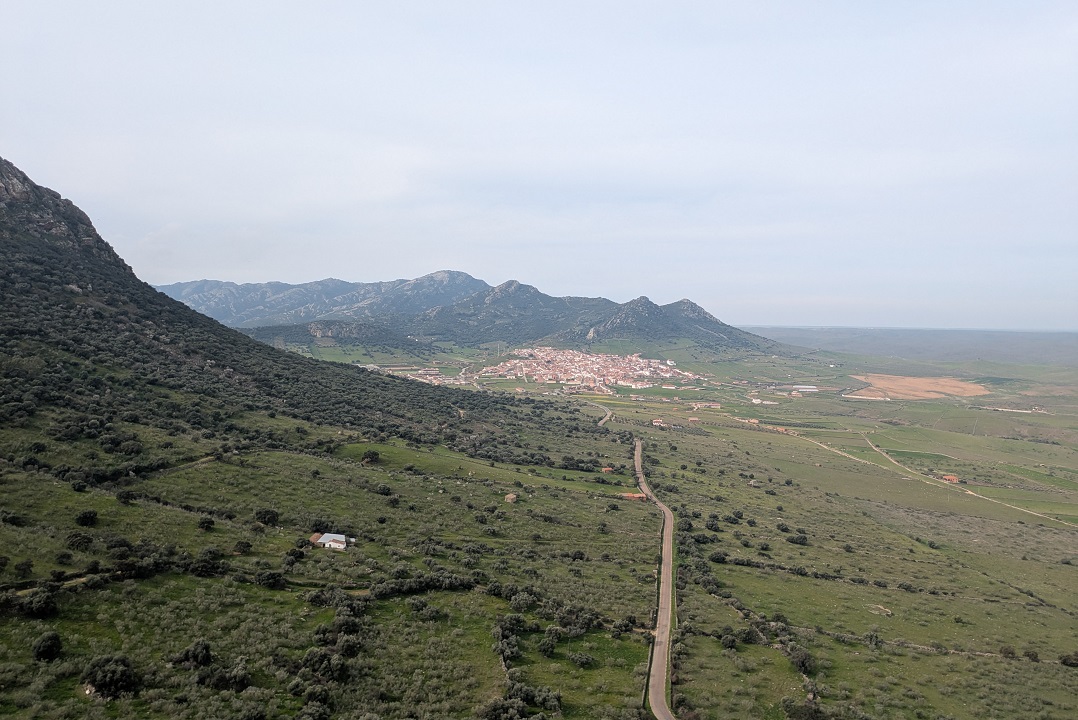
To the west
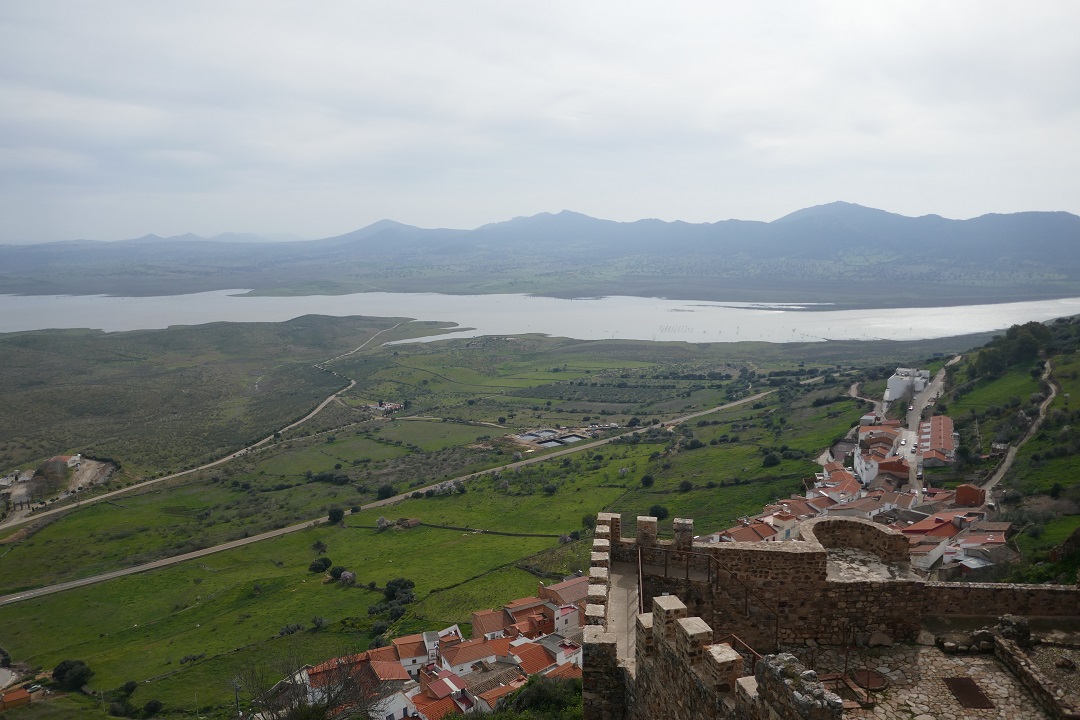
To the east
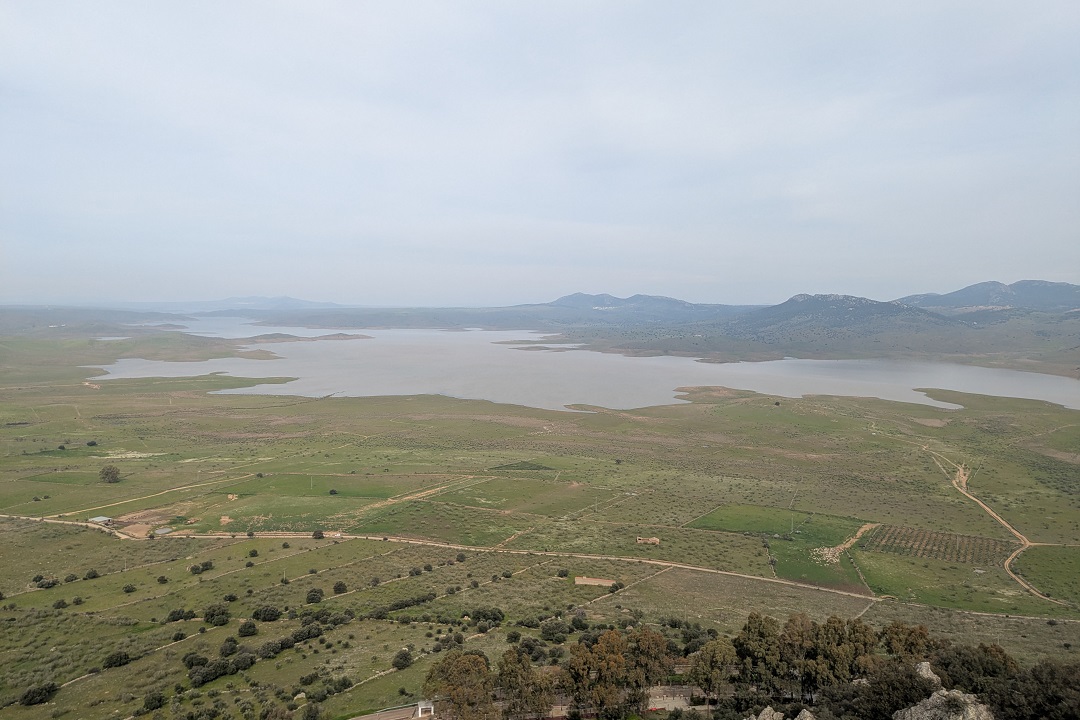
To the north
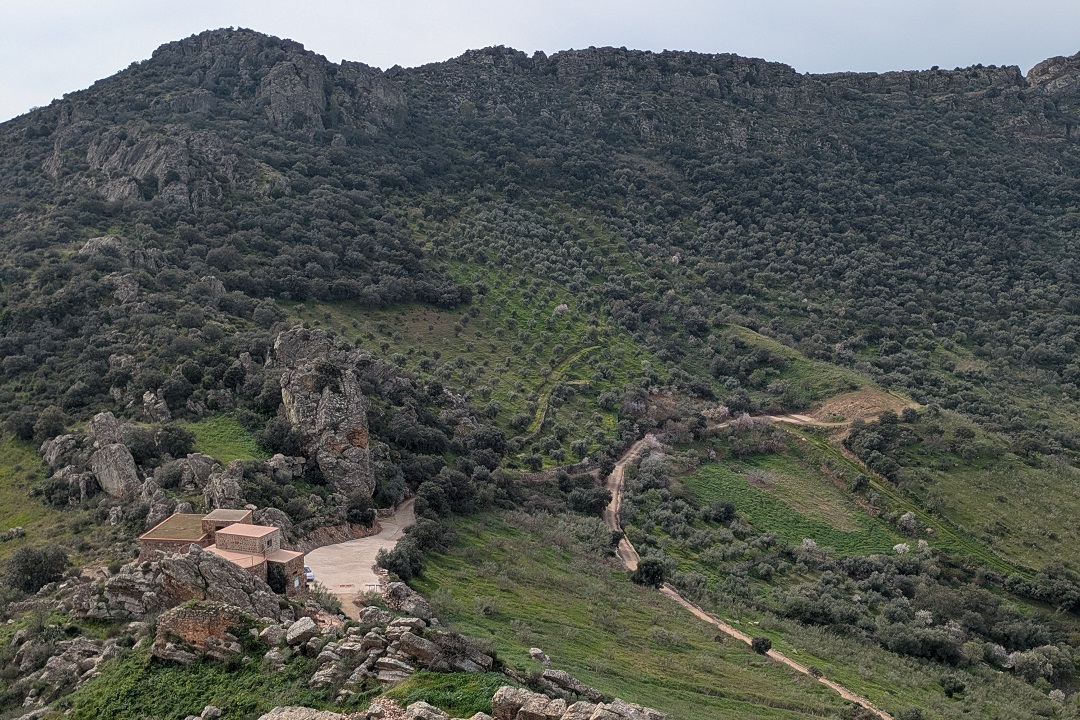
To the south
Other things to see and do in La Serena:
- Castillo de Magacela
- Senda de las Pozatas walking route, in Castuera
This content is protected by copyright and belongs exclusively to Irene Corchado Resmella. To know exactly what this means, read the 'Copyright' section in the Website terms of use.

Irene Corchado Resmella
Hi! I’m Irene (/ee-REH-neh/). Long since settled in the UK, I explore my Spanish home region of Extremadura with an inquisitive mind, a sharp eye, and the duality that comes with being both a local and a visitor. Then I write about it here to help you discover this beautiful yet overlooked part of Spain. If you have any questions after reading this article, submit a comment below! Read more about me.
